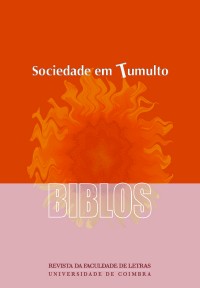Please use this identifier to cite or link to this item:
https://hdl.handle.net/10316.2/32743| DC Field | Value | Language |
|---|---|---|
| dc.contributor.author | Barbosa, Tereza Virgínia Ribeiro | - |
| dc.date.accessioned | 2014-07-07T14:17:53Z | |
| dc.date.accessioned | 2020-09-18T09:10:01Z | - |
| dc.date.available | 2014-07-07T14:17:53Z | |
| dc.date.available | 2020-09-18T09:10:01Z | - |
| dc.date.issued | 2009 | - |
| dc.identifier.issn | 0870-4112 | - |
| dc.identifier.uri | https://hdl.handle.net/10316.2/32743 | - |
| dc.description.abstract | The purpose of this article is to discuss the posture expected of the tragic actor in his performance, namely the representation of man as he was viewed in the 5th century B.C. The goal is limited to the commentary and discussion of the figure of the cock, a famed animal that appeared in literary works throughout the world. Among the many examples that abound, the article highlights Aeschylus’s metaphor for the notable Aegisthus, Clytemnestra’s lover, who plays the role of coadjuvant in the assassination of his cousin, the king who won the Trojan war, in the tragedy Agamemnon. | eng |
| dc.description.abstract | Neste trabalho, pretendemos comentar a postura que se poderia esperar de um actor trágico no desempenho da sua função, a saber, a representação do homem tal como o entendia a sua época, o século V a.C. A nossa meta será limitada, ao fazer o comentário e tirar conclusões sobre um galo, animal ilustre que figurou em obras literárias de povos do mundo inteiro. Exemplos não faltam e, entre eles, destacamos uma metáfora de Ésquilo para designar o notável Egisto, amante de Clitemnestra, que desempenha, na tragedia Agamemnon, um papel coadjuvante no assassinato do rei vencedor da guerra de Tróia, seu primo. | por |
| dc.language.iso | por | - |
| dc.publisher | Faculdade de Letras da Universidade de Coimbra | - |
| dc.subject | tragic actor | eng |
| dc.subject | metaphor | eng |
| dc.subject | representation | eng |
| dc.subject | actor trágico | por |
| dc.subject | metáfora | por |
| dc.subject | representação | por |
| dc.title | As rinhas de galo como exercício para a postura da Persona trágica | por |
| dc.type | article | - |
| uc.publication.collection | Biblos vol. VII | - |
| uc.publication.firstPage | 243 | - |
| uc.publication.lastPage | 260 | - |
| uc.publication.location | Coimbra | - |
| uc.publication.journalTitle | Biblos | - |
| uc.publication.volume | 7 | por |
| dc.identifier.doi | 10.14195/0870-4112_7_11 | - |
| uc.publication.section | Varia | - |
| uc.publication.digCollection | IP | - |
| uc.publication.digCollection | B1 | - |
| uc.publication.orderno | 11 | - |
| uc.publication.area | Artes e Humanidades | - |
| uc.publication.manifest | https://dl.uc.pt/json/iiif/10316.2/32743/218194/manifest?manifest=/json/iiif/10316.2/32743/218194/manifest | - |
| uc.publication.thumbnail | https://dl.uc.pt/retrieve/11291292 | - |
| uc.itemId | 71767 | - |
| uc.thumbnail.uri | https://dl.uc.pt/iiif-imgsrv/11291256/dl!3!12!71!25!127125083413511188936069756536105626141 | - |
| item.grantfulltext | open | - |
| item.fulltext | With Fulltext | - |
| Appears in Collections: | Biblos | |
Files in This Item:
| File | Description | Size | Format | |
|---|---|---|---|---|
| biblosvii_artigo11.pdf | 611.55 kB | Adobe PDF |  |
Items in DSpace are protected by copyright, with all rights reserved, unless otherwise indicated.
